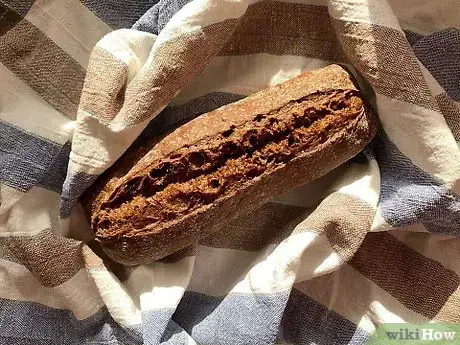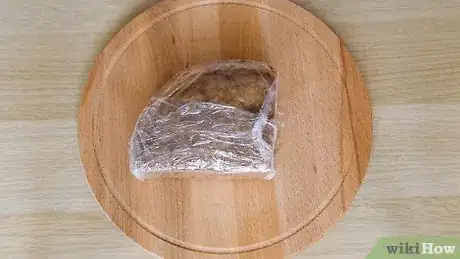This article was co-authored by wikiHow staff writer, Madeleine Criglow. Madeleine Criglow is a wikiHow Staff writer based in the Pacific Northwest. She has over six years of experience working in copywriting, editing, and journalism. In addition to her work for wikiHow, she writes a monthly film column for Tigard Life and Tualatin Life newspaper. Madeleine graduated from the University of Puget Sound with a BA in English with an emphasis in Creative Writing.
There are 8 references cited in this article, which can be found at the bottom of the page.
The wikiHow Culinary Team also followed the article's instructions and verified that they work.
This article has been viewed 1,082,950 times.
Learn more...
When it comes to storing bread, you've got a whole lot of choices. Some are better than others, depending on what kind of bread you're looking to store. Whether you've just baked a loaf or recently bought fresh bread from the store, this article is here to help. Read on for how to store your bread to keep it tasting fresh!
Steps
Community Q&A
-
QuestionHow can you prevent homemade yeast bread from molding or going stale?
 Community AnswerWrap the bread tightly in a few layers of plastic wrap, then freeze it. Before you defrost your bread, remember to unwrap it first. Otherwise, the water from the melting ice crystals get trapped on the surface of the bread, leaving you with soggy slices.
Community AnswerWrap the bread tightly in a few layers of plastic wrap, then freeze it. Before you defrost your bread, remember to unwrap it first. Otherwise, the water from the melting ice crystals get trapped on the surface of the bread, leaving you with soggy slices. -
QuestionWill air in my bag of bread make it go stale faster?
 Community AnswerYes, having air in the bag will make the bread go stale faster.
Community AnswerYes, having air in the bag will make the bread go stale faster. -
QuestionHow should I store the bread if I don't have electricity?
 Community AnswerSimply store it in a cool, dark place.
Community AnswerSimply store it in a cool, dark place.
References
- ↑ https://www.epicurious.com/expert-advice/how-to-keep-bread-fresh-article
- ↑ https://www.thekitchn.com/the-best-way-to-freeze-and-thaw-bread-246477
- ↑ https://www.epicurious.com/expert-advice/how-to-keep-bread-fresh-article
- ↑ https://www.epicurious.com/expert-advice/how-to-keep-bread-fresh-article
- ↑ http://www.seriouseats.com/2014/06/does-refrigeration-really-ruin-bread.html
- ↑ https://www.epicurious.com/expert-advice/how-to-keep-bread-fresh-article
- ↑ http://archive.boston.com/news/science/articles/2007/12/31/does_bread_go_stale_faster_when_kept_in_the_fridge_or_when_stored_at_room_temperature/
- ↑ https://www.thekitchn.com/the-best-way-to-freeze-and-thaw-bread-246477
- ↑ https://www.insider.com/how-to-store-bread
- ↑ https://www.thekitchn.com/the-best-way-to-freeze-and-thaw-bread-246477
- ↑ https://www.thekitchn.com/the-best-way-to-freeze-and-thaw-bread-246477
- ↑ https://www.myrecipes.com/how-to/how-to-freeze-and-thaw-bread
- ↑ https://campinghunt.com/keeping-bread-fresh-when-camping/
- ↑ https://campinghunt.com/keeping-bread-fresh-when-camping/
- ↑ https://campinghunt.com/keeping-bread-fresh-when-camping/
- ↑ https://campinghunt.com/keeping-bread-fresh-when-camping/
- ↑ https://www.goodhousekeeping.com/uk/house-and-home/household-advice/a673628/how-to-make-bread-last-longer/
About This Article
To properly store bread, wrap it in plastic or aluminum foil, which traps the bread’s natural moisture to keep it from getting hard. Keep the bread at room temperature in a dry place out of direct sunlight for 2 days to use the bread. If you have extra bread that you won’t use within a few days, place the bread in resealable plastic bags in the freezer. Avoid storing your bread in the refrigerator, which can cause it to become dry and crumbly. If you want to learn how to thaw frozen bread, keep reading the article!

























































